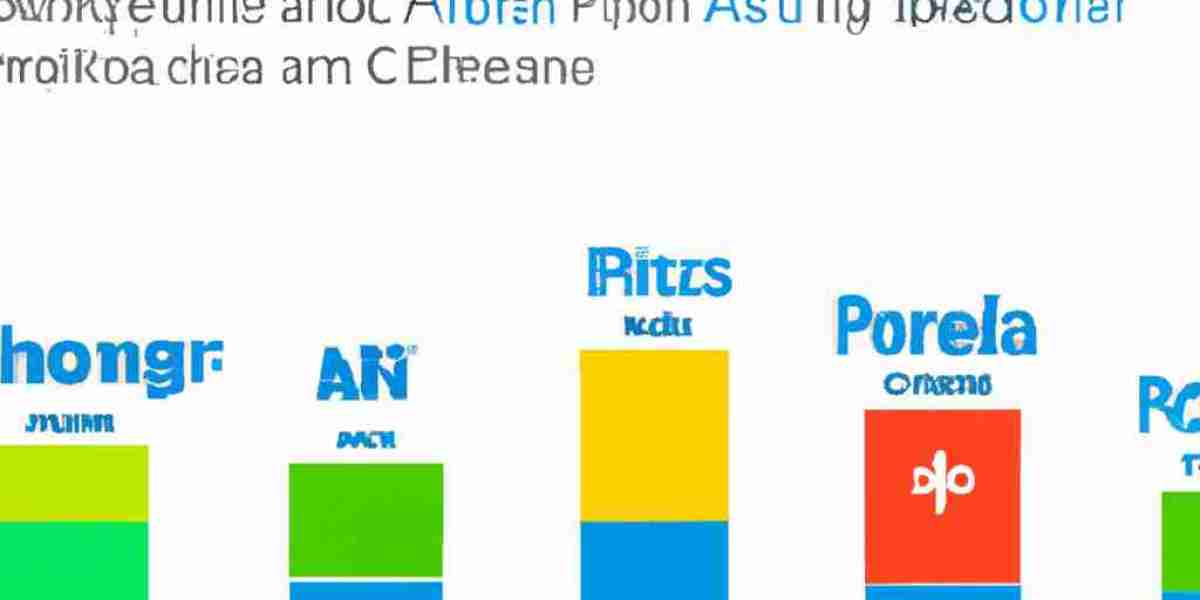The convergence of Silicon Valley with the defense industry can have several potential implications:
1. Technological Advancements: Silicon Valley's expertise in innovation and technology can lead to significant advancements in defense capabilities. Collaboration between tech companies and the defense industry can result in the development of cutting-edge military technologies, such as artificial intelligence, autonomous systems, cybersecurity solutions, and advanced sensors.
2. Enhanced National Security: The integration of Silicon Valley's technological capabilities with the defense industry can strengthen national security. It can lead to the creation of more robust defense systems, improved intelligence gathering and analysis, and enhanced capabilities for protecting critical infrastructure.
3. Economic Growth: Collaboration between Silicon Valley and the defense industry can drive economic growth. Defense contracts and partnerships can provide funding and incentives for tech companies, leading to job creation, increased investment, and economic development in the region.
4. Ethical and Legal Considerations: The convergence of Silicon Valley and the defense industry raises important ethical and legal considerations. Tech companies involved in defense projects may face scrutiny and public debate over the ethical implications of their technologies, such as the use of artificial intelligence in autonomous weapons systems. Ensuring the responsible and ethical use of emerging technologies becomes crucial in this context.
5. Global Competitiveness: The collaboration between Silicon Valley and the defense industry can enhance the competitiveness of the United States on the global stage. Developing advanced defense technologies domestically can reduce reliance on foreign suppliers and maintain technological superiority in areas vital to national security.
6. Regulatory Challenges: The convergence of Silicon Valley and the defense industry may also present regulatory challenges. Balancing innovation and national security interests requires careful consideration of export controls, intellectual property rights, and the protection of sensitive technologies from adversaries.
Overall, the convergence of Silicon Valley with the defense industry has the potential to drive technological advancements, strengthen national security, and contribute to economic growth. However, it also raises important ethical, legal, and regulatory considerations that need to be carefully addressed.
Here are some additional points to consider regarding the implications of Silicon Valley's convergence with the defense industry:
Dual-Use Technologies: Silicon Valley's expertise often lies in developing technologies with both civilian and military applications. As tech companies collaborate with the defense industry, there is potential for the dual-use of technologies. While this can lead to innovation and efficiency, it also raises concerns about the unintended consequences of technologies developed for civilian purposes being adapted for military use.
Talent and Expertise Exchange: The convergence of Silicon Valley and the defense industry facilitates the exchange of talent and expertise. Engineers, researchers, and technologists from Silicon Valley can bring their knowledge and fresh perspectives to defense projects. Similarly, defense projects can offer unique challenges and opportunities for professionals in Silicon Valley, attracting top talent to work on cutting-edge defense technologies.
Public Perception and Trust: The involvement of tech companies in defense projects can impact public perception and trust. Some individuals may have concerns about the potential misuse of technologies or the alignment of tech companies with military objectives. Addressing these concerns through transparency, ethical guidelines, and open dialogue can help build trust and ensure public acceptance of these collaborations.
Impact on Innovation: Collaboration with the defense industry can have both positive and negative impacts on innovation. On one hand, defense projects provide funding and resources for research and development, driving technological advancements. On the other hand, the specific requirements and constraints of defense projects may prioritize certain technologies or hinder the exploration of alternative approaches. Balancing the need for innovation with specific defense requirements becomes crucial.
International Competition: The convergence of Silicon Valley and the defense industry is not unique to the United States. Other countries, such as China and Russia, are also investing in similar collaborations to enhance their defense capabilities. This creates a competitive landscape where maintaining technological superiority and protecting intellectual property become critical considerations.
Regulatory Frameworks and Export Controls: The convergence of Silicon Valley and the defense industry may necessitate the development or adaptation of regulatory frameworks and export controls. Governments need to strike a balance between promoting innovation and safeguarding national security interests. Ensuring that appropriate regulations are in place tocontrol the export of sensitive technologies and protect intellectual property is important in preventing unauthorized access or misuse by adversaries.
Geopolitical Implications: The convergence of Silicon Valley and the defense industry can have broader geopolitical implications. It can shape alliances and partnerships between countries based on shared technological interests. It may also influence the balance of power and strategic dynamics among nations, particularly as emerging technologies such as artificial intelligence, quantum computing, and space technologies become key components of defense capabilities.
Ethical Responsibility: With the increased integration of emerging technologies in defense systems, there is a growing need for ethical responsibility. Tech companies collaborating with the defense industry must consider the ethical implications of their technologies, such as ensuring human oversight and accountability in autonomous systems, minimizing civilian harm, and upholding international humanitarian laws.
Intellectual Property and Commercialization: Collaboration with the defense industry may impact intellectual property rights and the commercialization of technologies. Tech companies may need to navigate complex agreements and considerations regarding the ownership and use of intellectual property developed through defense projects.
Long-Term Impact on Tech Industry: The convergence of Silicon Valley and the defense industry can shape the future trajectory of the tech industry. It may lead to a blurring of boundaries between traditional defense contractors and tech companies, as well as the emergence of new players in the defense technology space. This convergence can influence investment patterns, research priorities, and the overall direction of technological innovation in the long run.
Examples of Dual-Use Technologies:
The convergence of Silicon Valley and the defense industry has resulted in the development of several dual-use technologies that have applications in both civilian and military domains. Here are a few examples:
a. Artificial Intelligence (AI): AI technology has applications in various fields, including healthcare, finance, and transportation. In the defense sector, AI is used for autonomous systems, data analysis, predictive modeling, and decision-making support.
b. Robotics: Robotics technology developed in Silicon Valley has found applications in both civilian and military contexts. Robots are used in manufacturing, logistics, healthcare, and search and rescue operations. In the defense industry, they are employed for tasks like bomb disposal, surveillance, and reconnaissance.
c. Cybersecurity: Silicon Valley has expertise in developing cutting-edge cybersecurity solutions to protect networks, data, and systems. These technologies are crucial for safeguarding critical infrastructure, financial institutions, and government networks against cyber threats, including those with military implications.
d. Communication and Networking: Advancements in communication and networking technologies have dual-use applications. Technologies such as 5G, satellite systems, and encryption methods are essential for both civilian and military communications.
e. Sensors and Imaging: Silicon Valley's advancements in sensor technologies and imaging systems have wide-ranging applications. These include medical imaging, environmental monitoring, autonomous vehicles, and military applications like surveillance, target acquisition, and remote sensing.
Addressing Public Concerns:
Tech companies collaborating with the defense industry can address public concerns about the potential misuse of technologies through various measures:
a. Transparency: Companies can be transparent about their collaborations and clearly communicate the intended use and limitations of their technologies. This can help build trust and alleviate concerns about the misuse of technology.
b. Ethical Guidelines: Tech companies can establish and adhere to ethical guidelines that govern the development and use of their technologies. These guidelines can emphasize the responsible use of technologies, respect for human rights, and compliance with international humanitarian laws.
c. Public Engagement: Engaging with the public, civil society organizations, and experts can provide opportunities for dialogue and input. This can help address concerns, gather feedback, and ensure that public values and ethical considerations are taken into account.
d. Regulatory Compliance: Tech companies can comply with existing regulations and export controls to ensure that their technologies are used responsibly and do not fall into the wrong hands.
e. External Oversight: Collaborating with independent organizations or establishing external advisory boards can provide additional oversight and ensure that ethical considerations are upheld throughout the development and deployment of technologies.
Balancing Innovation and Defense Requirements:
Striking a balance between innovation and specific defense requirements can present challenges. Some potential challenges include:
a. Rigid Procurement Processes: Defense procurement processes are often designed to prioritize specific requirements and ensure compliance with regulations. This can sometimes hinder the adoption of innovative technologies or slow down the pace of development.
b. Risk Aversion: The defense industry tends to be risk-averse due to the critical nature of its operations. This can discourage the adoption of emerging technologies that may still be perceived as unproven or pose potential risks.
c. Compatibility and Integration: Integrating innovative technologies into existing defense systems can be complex. Compatibility issues, interoperability challenges, and the need for extensive testing and validation can create delays and additional costs.
d. Security and Reliability: Defense technologies require a high level of security and reliability. Ensuring that innovative technologies meet stringent security standards and can perform reliably in mission-critical scenarios is essential but can be challenging.
e. Long Development Cycles: Defense projects often have long development cycles due to rigorous testing, certification, and compliance requirements. This can make it difficult to keep up with the rapid pace of innovation in Silicon Valley, where technology evolves quickly.
Addressing these challenges requires close collaboration between tech companies and defense organizations, flexibility in procurement processes, risk management strategies, and a willingness to adapt and adopt emerging technologies while ensuring they meet defense requirements.
By navigating these challenges, tech companies and the defense industry can find a balance that allows for innovation while meeting the specific needs and demands of defense applications.







